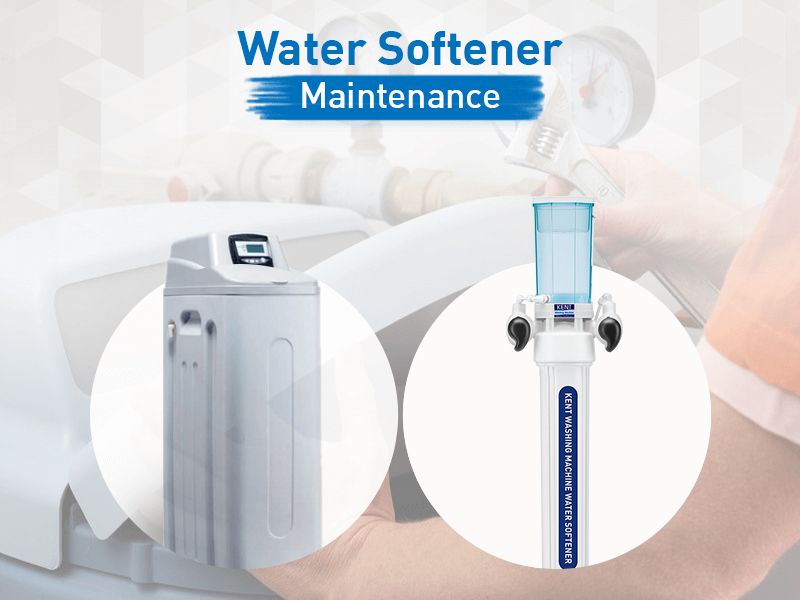When it comes to water softener maintenance and servicing, what should you expect? What are the most common problems you’ll run into across various types of water softeners and how do troubleshoot those issues?
In this article, we’ll answer that question specifically.
Water Softener Troubleshooting: 5 Most Common Water Softener Maintenance Issues
Here are some of the most common water softener problems you can run into:
- Clogs
-
Mechanical failures.
-
Problems with the mineral tank.
-
Problems with the resin.
-
Saturated filter.
First, a note: your water softener issue depends on your water softener. If you have a traditional, old-school ion exchange softener, then chances are the problem is related to maintenance. An ion exchange, salt-based water softener requires regular salt refills, occasional resin refills, and most likely a filter replacement as well.
If you dislike water softener maintenance, it might be best to go with a template assisted crystallization system like the ones we offer here at FilterSmart
Now, with that said, let’s dive into the most common salt-based water softener issues one by one:
Water Softener Issue #1: Clogs
Clogs can occur for a few reasons:
-
Some water found its way into the salt tank as a result of a backup.
In order to fix this, you have to get the water out of the salt tank. Often, there are two reasons that this might happen: 1. the discharge valve is broken, and 2. the float valve is set too high.
If there’s a clog due to salt or magnesium and calcium, look up what solutions you can use to clean out your water softener. Often you can use a vinegar and water solution to remove any build-up that might have gathered inside the system.
If the discharge valve is broken, you might have to contact a local plumber -- or, if you’re really unlucky and you have a system that’s too complicated for your local plumber, a knowledgeable mechanic from the same water softening company you bought the system from.
Finally, just like in your toilet, there might be a diaphragm ballcock or float valve that you need to adjust so that the water can “flush” (so that it doesn’t build up too high).
Water Softener Issue #2: Mechanical Failures
Unfortunately, the average age of most water softeners is only ten to fifteen years. At some point, the cost of repairing any motor problem or other mechanical failure in your water softener won’t be equal to the value that you’re receiving from that system.
It’s like when you drive a beater and it keeps breaking down again and again. Maybe you take it to the mechanic and he tells you the fix is going to cost a couple thousand dollars -- which is more than the value of your car at this point.
The message is simple: It’s time to get a new car. If your water softener is too old (if it’s still set up on a timer-based system), speak to a professional and evaluate the costs.
However, there’s also a good chance your system is experiencing a mechanical failure and it isn’t old. The same advice still stands: contact a professional.
Water Softener Issue #3: Problems with the Mineral Tank: Out of Salt, Salt Bridges, etc.
Along the same lines as clogs, there’s a good chance that you have a more easily solvable issue: you ran out of salt.
Maybe a loved one who usually took care of those things is on vacation or bogged down with a lot of work, so now it’s up to you to find out why the water softener isn’t working.
As we mentioned before, ion exchange water softeners use salt as a way to substitute magnesium and calcium out for the sodium. If you run of out of sodium, then hard water is just going to flow through your system without subbing anything out.
Most water softeners will make this pretty obvious. They’ll have a flashing warning label or something.
Sometimes, though, either the screen or sensor is broken, and the water softener screen (if your water softener even has one), isn’t giving you the information you need.
Before rushing to call the plumber or specialized repairman, check to see if you need any more salt in the tank.
Another thing that can go wrong with salt: it can create a salt bridge. Salt bridges form because of adding too much salt to the mineral tank. You can try to break it apart yourself, or you can call a professional. The lesson is the same: whenever salt is involved, you’re going to need more maintenance.
Water Softener Issue #4: Problems with the Resin
Similar to the problem above, the resin in your water softener may have run its course. Remember that the resin is what the magnesium and calcium bind to, and then the sodium binds to that resin.
But everything runs out of “stickiness” eventually. If your water softener regenerates just fine and then doesn’t soften any water (or runs out of soft water very quickly), you probably have a problem with the resin bed.
Resin usually takes anywhere from 15 to 25 years to fully expire, so this one is kind of unfortunate. In order to solve the problem, you’ll need to buy new resin and swap it out with the old.
Water Softener Issue #5: Saturated Filter
Finally, another thing that can go wrong with your water softener is that the filter expires.
Filters remove larger sediment before they come into contact with the water softener itself. If your filter is old, your water softener is going to try to take on the job of filtering not just magnesium and calcium, but everything else that’s in your water. And it’s probably not going to do a great job of it, possibly damaging the system in the process.
Make sure to replace the filter regularly.
Why Are There So Many Issues With Salt-based Systems?
Generally speaking any time you deal with water and electricity you are bound to run into problems. These issues are so common that local water dealers make the majority of their business by “servicing” water softeners. Basically there are so many problems that you are likely to experience that they are able to make a service out of fixing the water softener systems they just sold you for years down the road. Woah what a product!
If you are looking into buying a water softener system and thinking about what kind of maintenance to expect, unfortunately, these issues are more of a norm than an exception. Maintaining your salt system is truly an ongoing issue besides just adding the monthly salt to the brine tank. These maintenance costs will certainly add up over time making the salt-based water softener much more of a larger investment than the initial purchase. So these issues are something to really keep in mind and you are more than likely to experience if you buy an ion exchange system.
What Can I Do to Make All These Problems Go Away?
Most water softener maintenance issues are associated with ion exchange water softeners, since they require more parts than template-assisted crystallization.
If you’re fed up with your current water softener and you want a system that’s more along the lines of set-it-and-forget-it, check out the FilterSmart line.









